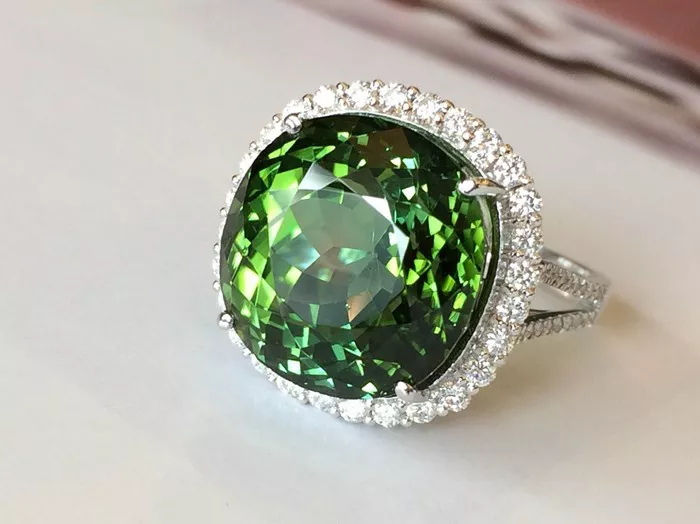Emeralds are renowned for their captivating green color and exquisite beauty. As one of the most prized gemstones in the world, emeralds have captured the hearts of collectors, connoisseurs, and jewelry enthusiasts for centuries. However, not all emeralds are created equal, and some are rarer and more valuable than others. In this article, we will explore the concept of rarity in emeralds and identify some of the rarest types of emeralds found in nature.
Understanding Emeralds
Emeralds are a variety of the mineral beryl, which also includes other gemstones such as aquamarine and morganite. What sets emeralds apart is their distinctive green color, which ranges from light, grassy shades to deep, velvety hues. The green color of emeralds is caused by trace amounts of chromium, vanadium, and iron within the crystal structure, giving them their unique and vibrant appearance.
Emeralds are found in various locations around the world, including Colombia, Zambia, Brazil, and Afghanistan. Colombian emeralds are particularly prized for their exceptional color and clarity, while Zambian emeralds are known for their rich, saturated green color.
What Makes an Emerald Rare
Several factors contribute to the rarity of an emerald:
Color: The color of an emerald is one of the most important factors in determining its rarity and value. The most desirable emeralds exhibit a rich, saturated green color with a high degree of transparency and depth. Stones with a vivid, intense green hue are particularly rare and command premium prices in the market.
Clarity: Clarity refers to the presence of inclusions or internal flaws within an emerald. While some inclusions are expected in natural emeralds due to the presence of other minerals and trace elements, stones with minimal to no visible inclusions are considered more valuable. However, emeralds with exceptional clarity are extremely rare and can be difficult to find.
Size: The size of an emerald also plays a role in its rarity and value. Larger emeralds are generally rarer than smaller ones and command higher prices in the market. However, larger emeralds with exceptional color, clarity, and transparency are particularly rare and can be extremely valuable.
Origin: The origin of an emerald can significantly impact its rarity and value. Emeralds from certain locations, such as Colombia and Zambia, are known for their exceptional color, clarity, and transparency, making them highly prized among collectors and connoisseurs. Additionally, emeralds with a provenance or historical significance may command premium prices in the market.
Treatment: The treatment of an emerald can also affect its rarity and value. While many emeralds undergo treatment to enhance their color and clarity, untreated stones with natural color and clarity are considered more desirable and rare. Additionally, emeralds with no or minimal treatment are often sought after by collectors and investors.
What is the Rarest Emerald
While all emeralds are rare and valuable gemstones, some types are considered rarer than others due to their exceptional color, clarity, and origin. Here are some of the rarest types of emeralds found in nature:
Colombian Emeralds: Colombian emeralds are widely regarded as some of the finest and most valuable emeralds in the world. Known for their exceptional color, clarity, and transparency, Colombian emeralds are prized for their vivid, intense green hue and rich saturation. Emeralds from the Muzo and Chivor mines in Colombia are particularly renowned for their quality and beauty.
Trapiche Emeralds: Trapiche emeralds are a rare and unique variety of emeralds characterized by their distinctive six-pointed star pattern. This pattern is caused by the presence of impurities, such as carbon and pyrite, which form radial spokes around a central core. Trapiche emeralds are found in only a few locations around the world, including Colombia and Brazil, making them extremely rare and valuable.
Muzo Emeralds: Muzo emeralds are prized for their exceptional color and clarity, as well as their large size and high transparency. These emeralds are named after the Muzo mine in Colombia, which is known for producing some of the finest emeralds in the world. Muzo emeralds are characterized by their vivid, saturated green color and exceptional transparency, making them highly sought after by collectors and connoisseurs.
Zambian Emeralds: Zambian emeralds are known for their rich, saturated green color and exceptional clarity. These emeralds are found in the copper-rich region of Zambia, where they are formed in a geological environment similar to that of Colombian emeralds. Zambian emeralds are prized for their deep, velvety hue and are often compared to the finest Colombian emeralds in terms of quality and beauty.
Afghan Emeralds: Afghan emeralds are prized for their unique and distinctive color, which ranges from light, grassy shades to deep, intense greens. These emeralds are found in the Panjshir Valley of Afghanistan, where they are mined under challenging conditions at high altitudes. Afghan emeralds are characterized by their rich color and exceptional clarity, making them highly sought after by collectors and connoisseurs.
Conclusion
Emeralds are among the rarest and most valuable gemstones in the world, prized for their exceptional color, clarity, and rarity. While all emeralds are rare and beautiful gemstones, some types are considered rarer and more valuable than others due to their exceptional characteristics and origin. Whether you’re a collector, investor, or jewelry enthusiast, understanding the rarity of emeralds can help you appreciate their beauty and value and make informed decisions when purchasing or investing in these exquisite gemstones.


